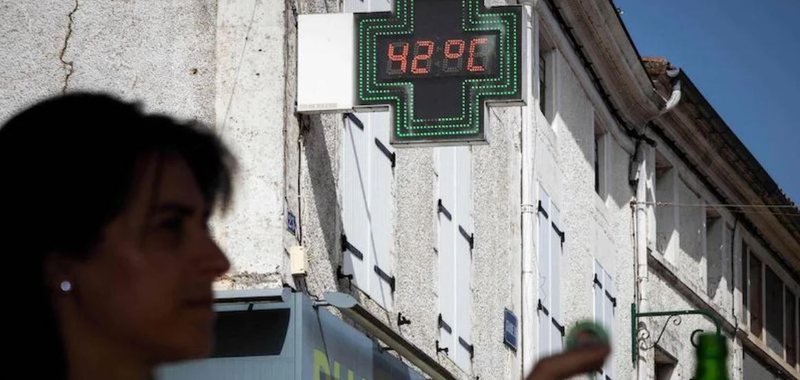Infrastruktura bankare, sa ATM ka Shqipëria për frymë? Transformimi i sistemit të pagesave në vend dhe krahasimi me rajonin e Europën

Në vitin 2024, numri i përgjithshëm i bankomateve (ATM) në Shqipëri vlerësohet të ketë qenë 1,011 dhe në tremujorin e parë të vitit 2025 kjo shifër është rritur në 1,064, duke reflektuar një prirje të qartë drejt zgjerimit të aksesit në shërbimet bankare për qytetarët përmes përmirësimit të infrastrukturës së tërheqjes dhe depozitimit të parasë në nivel kombëtar.
Shumica e këtyre ATM-ve ofrojnë funksionin bazë të tërheqjes së parasë, ku 925 prej tyre janë të përqendruara në këtë shërbim, por paralelisht ka një rritje të ndjeshme edhe në ofrimin e shërbimeve të tjera më të avancuara si transfertat bankare që ofrohen nga 294 ATM dhe depozitimi i parasë që është i mundur në 396 prej tyre, duke treguar një orientim të sektorit bankar drejt modernizimit dhe diversifikimit të shërbimeve.
Krahas bankomateve, terminalet POS përbëjnë një pjesë edhe më të rëndësishme të infrastrukturës së pagesave në Shqipëri, ku në vitin 2024 ishin në funksion 24,481 njësi dhe në tremujorin e parë të vitit 2025 kjo shifër u rrit në 25,190, duke treguar një përpjekje të qartë për të nxitur përdorimin e pagesave elektronike në vend dhe për të reduktuar varësinë nga paraja fizike, veçanërisht në pikat e shitjes.
Tirana mban peshën kryesore si në numrin e ATM-ve me 586 njësi ashtu edhe në atë të terminaleve POS me 18,684 njësi, duke reflektuar jo vetëm përqendrimin e popullsisë, por edhe dominimin e saj në aktivitetin ekonomik financiar dhe tregtar në rang vendi. Ndërkohë, qytete si Shkodra dhe Gjirokastra shfaqin gjithashtu një prani të lartë të ATM-ve me përkatësisht 119 dhe 126 njësi gjë që mund të shpjegohet me rëndësinë e tyre si qendra rajonale dhe destinacione turistike.
Nga ana tjetër, Korça, Elbasani dhe Lushnja paraqiten me një numër më të ulët të ATM-ve, çka nënkupton një potencial për investime të mëtejshme në infrastrukturën bankare dhe nevojën për një shpërndarje më të barabartë të shërbimeve financiare në të gjithë territorin.
Duke u ndalur te treguesit krahasues, Shqipëria ka 40.11 ATM për çdo 100,000 banorë, një shifër që është shumë afër mesatares botërore prej 40.42, duke treguar se vendi është në përputhje me standardet globale për sa i përket aksesit në infrastrukturën bazë të pagesave. Megjithatë, vendet e rajonit paraqesin tregues më të lartë ku Serbia ka 54.43 ATM, Maqedonia e Veriut 67.15, Bosnje Hercegovina 62.72, dhe Mali i Zi 83.45 ATM për 100,000 banorë. Këto shifra sugjerojnë se këto vende mund të kenë një infrastrukturë bankare më të zhvilluar, ose mund të jenë më të varura nga përdorimi i parasë fizike në krahasim me Shqipërinë. Ndërkohë, Kosova me 41.81 qëndron afër nivelit të Shqipërisë.
Mesatarja e Bashkimit Europian është ndjeshëm më e lartë me 61.49 ATM për 100,000 banorë, gjë që pasqyron një sistem bankar më të konsoliduar në vendet anëtare, por një analizë më e thelluar mbi vendet më të zhvilluara të Europës tregon një prirje të qartë drejt zvogëlimit të përdorimit të parasë fizike dhe rrjedhimisht edhe të numrit të bankomateve.
Shtete si Suedia, Danimarka dhe Holanda njihen për përdorimin minimal të parasë fizike dhe të dhënat tregojnë se numri i ATM-ve në këto vende ka rënë ndjeshëm duke reflektuar një zhvendosje drejt shoqërive thuajse plotësisht pa para fizike, ku qytetarët përdorin kryesisht karta aplikacione mobile dhe pagesa pa kontakt për të gjitha nevojat e tyre të përditshme financiare. Të dhënat nga Banka Botërore tregojnë një korrelacion negativ mes zhvillimit të një shoqërie pa para fizike dhe numrit të ATM-ve në këto vende.
Kjo tendencë është e rëndësishme sepse tregon se një numër i lartë bankomatesh nuk është domosdoshmërisht tregues i një ekonomie të zhvilluar, por shpesh herë reflekton një varësi të vazhdueshme nga paraja fizike ndërsa vendet që po udhëheqin tranzicionin drejt një ekonomie digjitale po fokusohen në zhvillimin e terminaleve POS në përmirësimin e platformave elektronike dhe në ndërtimin e një infrastrukture që e bën nevojën për para fizike gjithnjë e më të kufizuar.
Të dhënat tregojnë një lidhje të kundërt midis zhvillimit të pagesave elektronike dhe numrit të ATM-ve ku vendet me orientim të lartë drejt pagesave digjitale kanë gjithnjë e më pak nevojë për bankomate duke sinjalizuar se e ardhmja e pagesave nuk do të qëndrojë më në rritjen e pajisjeve fizike por në ofrimin e zgjidhjeve fleksibël të sigurta dhe të aksesueshme në mënyrë digjitale.
Për Shqipërinë, sfidat kryesore për të ardhmen përfshijnë reduktimin e pabarazive rajonale në shpërndarjen e infrastrukturës së pagesave rritjen e ndërgjegjësimit publik për përdorimin e pagesave elektronike dhe modernizimin e mëtejshëm të sistemit financiar, duke ndjekur modelet e vendeve të zhvilluara që po shkojnë drejt një ekonomie pa para fizike.
Një analizë e realizuar nga “Scan Intel” tregon gjithashtu se Shqipëria ka potencial të madh për të përfituar dhe kursyer nga reduktimi i përdorimit të parasë fizike, duke lehtësuar kostot operacionale dhe duke përmirësuar efikasitetin e sistemit të pagesave në tërësi.

Deri në 13 mijë euro gjobë për abuzimet me gjuetinë - Ndryshon ligji, subjektet private të drejtë për të marrë me qira zona për gjueti
Qeveria ka ndryshuar me “themel” ligjin për gjuetinë në Shqipëri, duke përcaktuar kushte dhe kritere të reja, baze të qartë dhe transparente, që rregullon......

A sigurohen shqiptarët kur udhëtojnë jashtë? - AMF: Vetëm 0.1% e shtetasve mendojnë për jetën dhe shëndetin në një vend tjetër
Ky vit nuk ka shënuar rekord vetëm për hyrjen e shtetasve të huaj në Shqipëri, por edhe për daljen e shqiptarëve jashtë vendit. Qoftë për pushime, punë ose......

Çmimet e vajit të ullirit, drejt rënies? - Prodhuesi më i madh në botë, optimist pas krizës së industrisë
Kompania spanjolle Deoleo, prodhuesi më i madh në botë i vajit të ullirit, thotë se të korrat e bollshme dhe përmirësimi i ndjenjës së tregut tregojnë se......

Temperaturat ekstreme rikthejnë zjarret në vend: 38 vatra në 24 orët e fundit, 14 ende aktive!
Drejtoria e Përgjithshme e Mbrojtjes nga Zjarri dhe Shpëtimin bëri të ditur se gjatë 24 orëve të fundit janë raportuar gjithsej 38 vatra zjarri në territorin......

Kina nuk ndikohet nga tarifat e Trump - Eksportet kineze u rritën me mbi 7%, pavarësisht barrierave tregtare
Kina nuk e vuan presionin tarifor tw administratws Trump. Në muajin korrik, eksportet kineze u rritën me 7.2 përqind nga viti në vit, duke tejkaluar......

Efekti i "Ishullit të Nxehtësisë" - A do të bëhen qytetet evropiane të pabanueshme?
Vera e vitit 2025 është shënuar sërish nga disa valë të njëpasnjëshme nxehtësie, të cilat kanë përfshirë pjesë të mëdha të Evropës. Askund efektet e këtij......

Greqia, energjia e rinovueshme “shpërdorohet” - Rreth 10% e prodhimit nga burimet e gjelbra mbeti jashtë rrjetit
Një përqindje gjithnjë në rritje e prodhimit të energjisë nga burimet e rinovueshme po shpërdorohet në Greqi, veçanërisht në periudha me kërkesë të ulët. Kjo......

Nvidia dhe AMD ia “dorëzojnë” fitimet Trump - 15% e të ardhurave nga shitjet e çipeve në Kinë shkon për qeverinë e SHBA-së
Nvidia dhe AMD kanë rënë dakord t’i japin qeverisë së Shteteve të Bashkuara 15% të të ardhurave nga shitjet në Kinë të çipeve të avancuara kompjuterike, si......




















